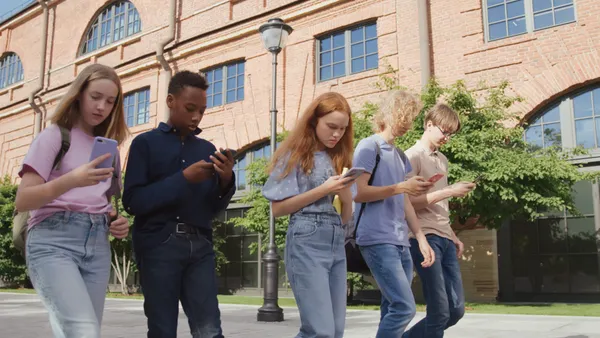Karen Janowski visited a school recently to assess a middle school student who she was told in advance would probably be resistant to working with her. Janowski is an assistive and educational technology consultant and an adjunct instructor at Simmons College School of Social Work in Boston. She pulled out her iPhone, showing him predictive text tools and a function that reads text for him — easily accessible tools that exist on iPhones anyone might have.
The next day, she heard that student went back to his classroom and was so excited about the new tools he had learned he told his classmates about them.
“These ubiquitous technologies are right there in your pocket,” Janowski said at the LearnLaunch Institute’s 2017 Across Boundaries conference last Friday. “They’re right there in your students’ pockets. We need to show them how to use these tools.”
Districts all over the country are finding ways to bring in Universal Design for Learning, ubiquitous tools like text-to-speech and new types of assistive technology that don’t carry a stigma of needing more help to students who use them.
A key element of the powerful potential of educational technology is its ability to offer tailored supports to students based on their particular needs.
Worksheets, Janowski said, do not provide this possibility.
“With paper, you are stuck,” Janowski said. “When you use technology, you have a lot of opportunities to re-try, to just start over again. It’s errorless.”
At UP Education Network, which runs five turnaround schools in Massachusetts, almost all students with diagnosed disabilities learn in inclusive classrooms with their peers. Almost 17% of UP students have disabilities, 64% are considered economically disadvantaged, which is a stricter level of measuring poverty than qualifying for the free and reduced-price lunch program, and 29% of students are English learners.
Ryan Knight, director of strategy and evaluation, says almost every student comes to the school with their learning below grade-level.
UP Education Network started experimenting with educational technology about four years ago, doing its own research to overcome a lack of rigorous studies in the field that analyze effectiveness. The network has created randomized trials within its schools, scaled them up to multiple sites and come to conclusions that are valuable internally as well as externally.
Knight says structuring that research can be very straightforward — simply asking one homeroom class of students to try one product while another tries a different product.
“This type of research is underinvested in across the education sector,” Knight said on Janowski’s panel. “I hope we can be a proof point that you can run that type of research internally.”
The U.S. Department of Education’s Office of Educational Technology has also released the Ed Tech Rapid Cycle Evaluation Coach in beta form in partnership with Mathematica. Schools without the internal capacity to conduct their own studies can benefit from the structured support.
Besides testing effectiveness, Knight can see, anecdotally, how engaging educational technology can make learning for students who had previously been disengaged. Ed tech, he said, can be what helps students learn to love learning.
Still, adaptive technology that creates self-paced pathways for individual students exists in a system that is expected to get students to certain milestones at specific points in time. Schools cannot ignore state standards in favor of giving students completely free reign to move at their own pace.
In UP Education Network, one lesson teachers have learned is that sometimes a student’s natural pace for learning every skill is too slow. Sometimes remediation has to be cut off.
“We’ve had to make a call to not prioritize a very, very low skill if we could get in a moderate skill that would unlock their ability to access grade-level material,” Knight said.
UP also keeps students engaged by celebrating their progress, even if they still test below grade-level after they have made great leaps in their learning. Like UP, many districts have decided the debate over measuring growth or measuring mastery should be settled by committing to measure both.
And while the most “effective” tools are still up for debate, educators agree educational technology can play a vital role in helping all students — perhaps especially English-learners and students with disabilities — achieve improvement in both.












